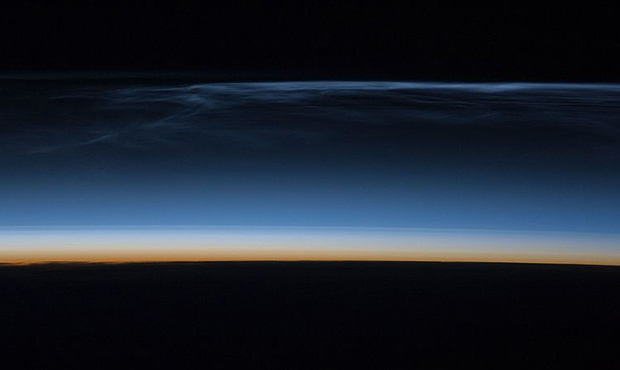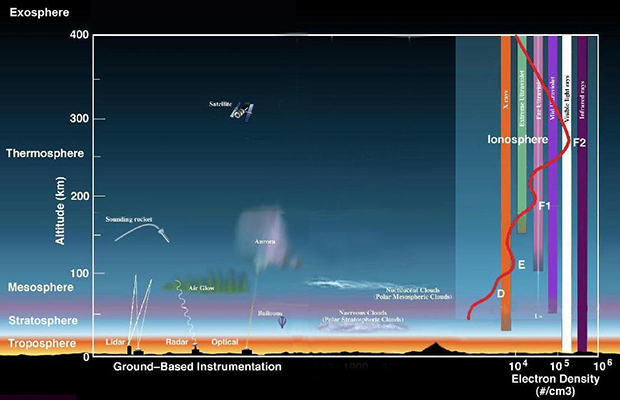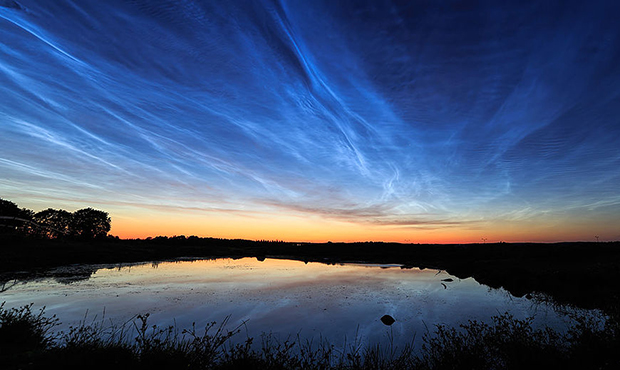Watch for strange ‘night shining’ clouds appearing in our Arizona skies
Jun 20, 2019, 2:20 PM

(Wikimedia Commons Photo)
(Wikimedia Commons Photo)
With the summer season about to begin, there are now sightings of some very unusual cloud formations being observed by millions of people around the world.
Just after sunset, these ribbons of bright blue and silver looking clouds are getting the attention of many people!
The word “noctilucent” comes from the Latin meaning “night shining.”
First observed by scientists around 1885, these luminous clouds appear during the summer months in both the northern and southern hemispheres.
Thought to be made up of water molecules and meteor dust, noctilucent clouds have been very bright during the period of dusk that we call twilight.
Usually seen at high latitudes, noctilucent cloud sightings have been observed as far south as Los Angeles, California, and Denver, Colorado.
This makes it possible for observers in Arizona, to have a high chance of seeing these too!
These amazing clouds are near the top of Earth’s atmosphere and some suggest that they lie in a region of the atmosphere known as the mesosphere. That places them at least 50 miles above the earth’s surface.
The atmosphere as we know it is made up of the following layers, from lowest to highest: troposphere, stratosphere, mesosphere, thermosphere and exosphere.
Here is an image of how the atmosphere looks on Earth:

(NASA Image)
Here is what noctilucent clouds look like:

(Wikimedia Commons Photo)
The noctilucent clouds may have also been seen after the great Krakatoa volcanic explosion of 1883; as large amounts of dust were launched into the atmosphere.
The explosion at Krakatoa was heard 3,000 miles away from the source!
If you are looking to see the elusive noctilucent clouds, here is my best suggestion on when and where to look.
You will need a clear view of the area around the setting Sun. At this time, in late June, look to the northwest sky around 20 minutes after sunset.
This places us in the period of twilight we call civil twilight. This occurs when the sun is just 6 degrees below the horizon.
The next layer of twilight is known as nautical twilight and this occurs when the sun is some 12 degrees below the horizon.
The final stage of twilight is known as astronomical twilight and this occurs when the sun is some 18 degrees below the horizon.
The best observations of the noctilucent clouds will occur about 45 minutes after or before sunset and sunrise in the northern hemisphere.
The northern hemisphere season occurs from May to August; the southern hemisphere season is from November to February.
Get your camera or phone ready, as you may be in for a treat of a lifetime, as you can view these elusive clouds one night and not see them again for a long period of time.
Good luck!
If you capture a cloud image and would like to share, send it to me.
June provides us with some amazing sights in our Arizona skies, as well as Jupiter, rising in the southeast sky at sunset.
To print your own monthly star chart, click here.
To view satellites/dates/times of passage, click here.
Listen to the Dr. Sky Show on KTAR News 92.3 FM every Saturday morning at 3 a.m.








